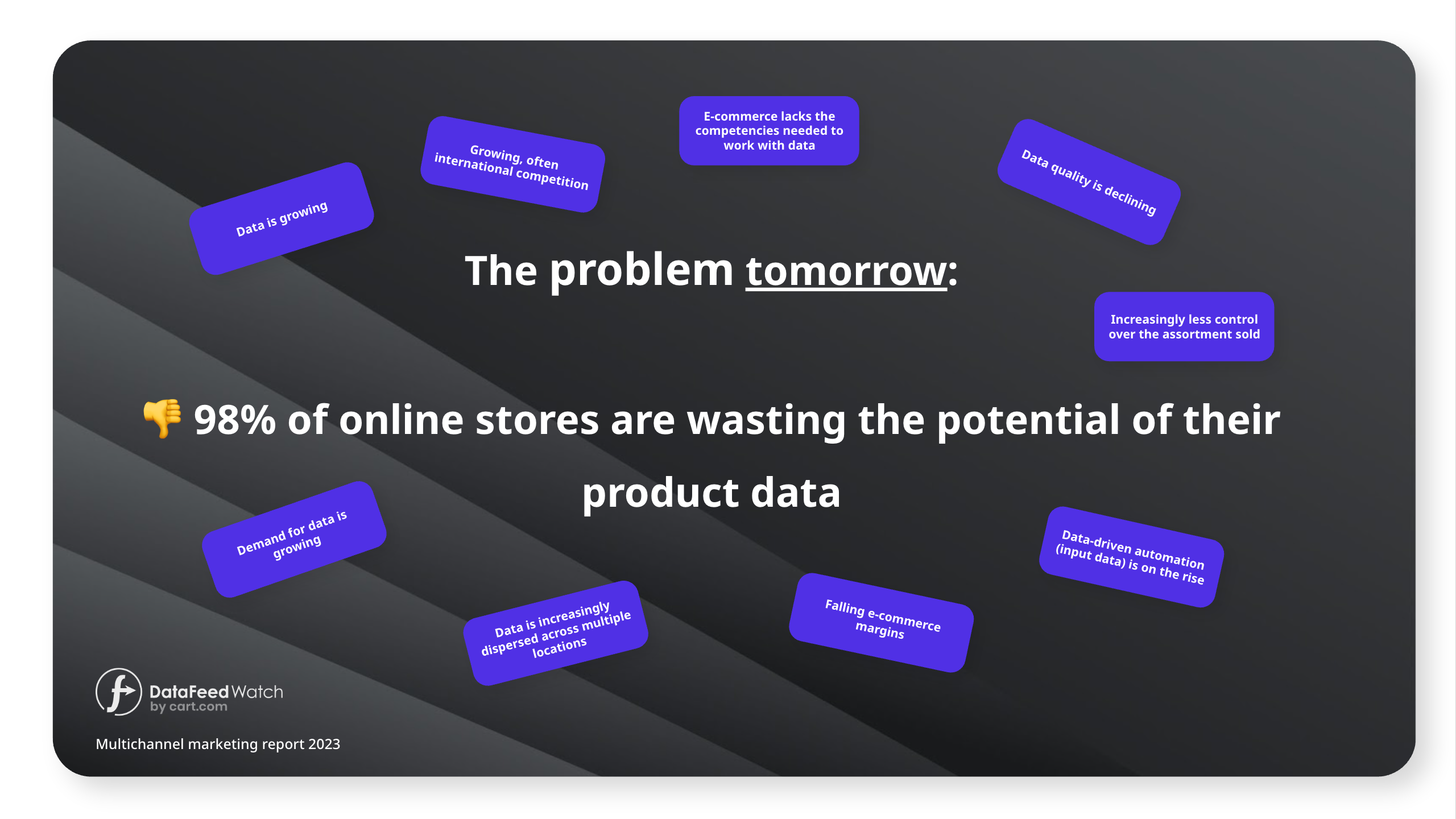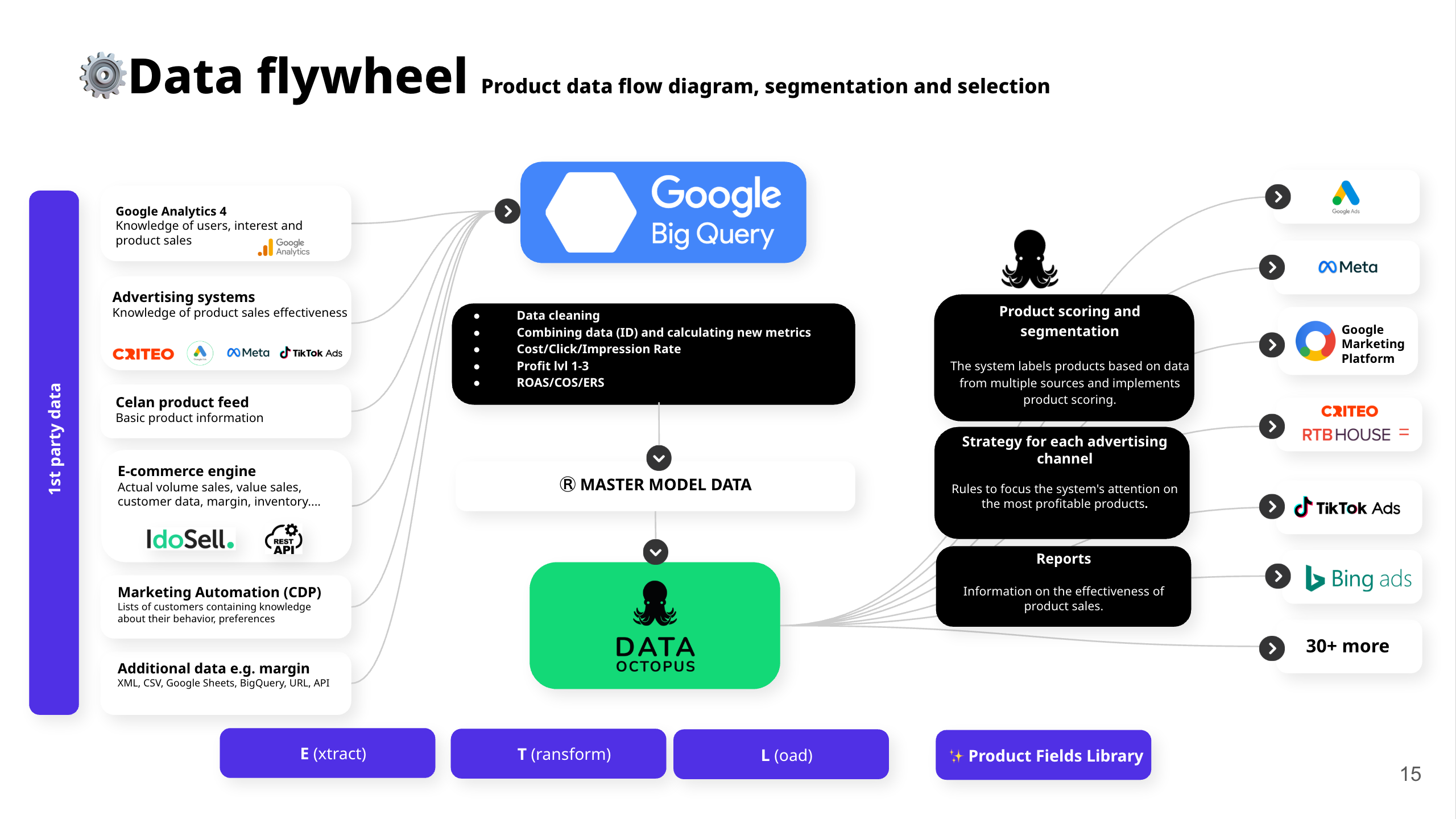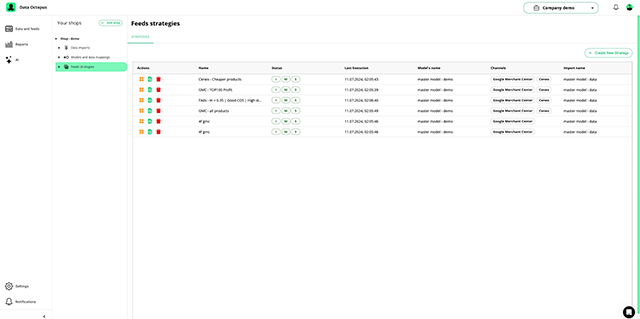
In this article you will learn:
- What do 2% of online stores do that the remaining 98% don’t? 🛒💡
- What problem is not being addressed and why is it gaining importance? 📈🤔
- What does the path to maximizing personalization in digital look like? 🎯✨
- What segments does RFM analysis divide customers into? 📊🔍
- Where to look for the network effect in e-commerce? 🕸️🛍️
- What does the data flow look like in the Data Octopus application? 🐙🔄
- How to segment products based on data from multiple sources? 📚 분류
- How to create an effective campaign for the most profitable products based on data? 💰🚀
- How to use RFM analysis to create audience lists for advertising systems? 📧📢
The article was also published in Online Marketing Magazine April-May 2025.More here 👉 link
In the dynamic world of e-commerce, where competition is constantly growing and margins are shrinking with every click, online store owners are facing increasingly difficult challenges. In this fight for profitable growth, the key role is played byeffective use of product and customer data. However, as alarmingly shown tests, until 98% of online stores waste the enormous potential of these valuable resources. Have you ever wondered what sets apart the 2% of market leaders who can turn data into real profits? This article is an expert guide that will reveal the secrets of automating e-commerce budget management processes based on data, presenting modern approaches and practical solutions that will allow you to join the elite group of digital visionaries.
98% of stores do not use the potential of product data
Let’s think for a moment about the chasm that divides the e-commerce vanguard from the rest of the pack. According to the Multichannel Marketing Report 2023, only2% of online stores use more than one data source (including margin!) for product segmentation, while as much as98% are left behind. This fundamental difference highlights the untapped potential that lies withinintegration of diverse data: from sales and margin information, through customer behavior and advertising campaign effectiveness, to data from analytical tools. These 2% of leaders are able to combine scattered information, creating a coherent picture of their business. Thanks to this, they takemore informed budget decisions, optimize advertising campaigns and personalize the offer, which directly translates intohigher profitability…. The remaining 98%, often relying on basic product data, irretrievably lose the opportunity to thoroughly understand their product range and customers.
Why are so many losing this valuable information capital? The problem is complex and evolving. Today, it manifests itselflow effectiveness of marketing campaigns, constant need to optimize budgets, scattered data between different platforms, lack of resources for advanced analytics, falling margins, aggressive competition and loss of control over the assortment…. And tomorrow? Tomorrow these challenges will become even more urgent, deepened bythe rapidly growing amount of data, its potentially decreasing quality and the growing demand for automation of work with it. Let’s remember thatArtificial intelligence (AI), which is increasingly entering e-commerce, needs, above all, good input data.

The path to maximizing personalization
Let’s travel back in time for a moment. The last decade in marketing was marked byusing data to segment customers and personalize communication. However, true digital mastery is achieved throughmaximizing personalization, which includes several key steps:
- automation of repetitive marketing tasks(such as e-mailing),
- improving communication efficiencyby delivering personalized messages at the perfect moment,
- use of user datato dynamically adapt content, product recommendations and page layout,big data collection and analysisto create precise segments,
- AI and machine learning implementationfor real-time personalization,
- assurance consistent customer experience across all communication channels,
- use of product data frommany sources, combining customer segmentation with products, activation of product data.
Customer segmentation as a result of RFM analysis
Read more about RFM in our help center👉 link

The arsenal of tools of a digital marketing specialist cannot be missingRFM analysis, a powerful method of customer segmentation based on theirshopping behavior. AnalyzingRecency (as recently purchased),Frequency (how often he buys) andMonetary Value (how much it spends), we can identify key customer segments. Let’s take a closer look at them. Before we get to that, it’s worth mentioning howit is important to base the data sent from the e-commerce engine. Very often, the data in Google Analytics 4 does not match 100% with the quantity and value of sales. It is simply an analytical system that has its own logic for processing and presenting data, and must also meet a number of requirements related to data anonymization. By performing RFM analysis based on data from the e-commerce engine, we have a guarantee of working on real data, moreover, assigned to identified customers. Google is very well suited to conducting RFM analysis.BigQuerybeing a product within Google Cloud Platform. As part of the “AI Skills of Tomorrow” course conducted by Google and SGH, an entire very valuable lesson was devoted to it.Within Data Octopus we use BigQuery as our native warehousedata and thenwe activatethese are processed automatically in the form of segmentation and sending information to the advertising system.
Where to look for the network effect in e-commerce?
Have you ever wondered where e-commerce is hiding?network effect? This is a phenomenon where the value of your offer grows with the number of users. In the context of e-commerce, it manifests itself in the relationship between customers and your offer.More customersgeneratesmore opinions and reviews, making it easier for new customers to make a decision, increasesstore credibilityand deliversricher datafor advanced segmentation. In turn,wider product rangeattractsmore customers, increasesthe probability of finding the product you are looking forand deliverseven more data, creating long-term“data flywheel”, driving further growth and optimization.
Data Flow Diagram
The key to profitable revenue growth in e-commerce is becomingCombining user and product segmentation. In response to these needs, aData Octopus– a Product Data Management application based on Google Cloud, whose mission isActivating product data to profitably grow e-commerce revenues. The application combines data from many distributed sources: e-commerce engines, Google Analytics 4, advertising systems, and even additional margin data, creatingunified master data model stored in Google BigQuery within Google Cloud…. In it, data is cleaned, combined and subjected to advanced calculations, creating new, key metrics…. Thanks to this, advancedproduct scoring and segmentationand creationprecise strategies for each advertising channel, focused on the most profitable positions in your offer…. The growing importance of such solutions is undeniable in the face of increasing data complexity and the imperative of automation, necessary to remain competitive.

Product segments based on data from multiple sources
Based on the data collected in the master model, we can perform advancedproduct segmentation, personalizing advertising strategies for over 30 channels. Imagine segments likeBestsellers (💰), generating the highest revenues,Hot new arrivals (🔥)with promising sales dynamics,Profit Generators (🤑)which, after taking into account the margin, bring the greatest profit, orHigh potential (🚀), or products with a high number of interactions but lower conversion. Such detailed segmentation allowsprecise targeting of advertising campaigns and bid optimizationdepending on the potential and characteristics of each product group.
Campaigning potential customers with the most profitable products that usually open a shopping cart
So how do you turn this data into an effective campaign? Using information aboutrevenues, advertising costs and margins, Data Octopus allows for identificationthe most profitable products (Profit segment LVL 1-2). Additionally, analysisthe order of adding products to the cart (First opener)indicates those that most often initiate purchases. Combining this data with knowledge aboutin stock, we can create a campaign aimed atpotential customers(selected e.g. using RFM analysis) fromthe most profitable products that are most likely to start their purchasing journey. In practice, we create a dedicatedcustom feedand we launch precisely targeted campaigns in advertising systems.
Using customer RFM analysis to create a recipient list for the advertising system
RFM analysis is also becoming a powerful tool for creatingrecipient lists for advertising systems. Customer transaction data is analyzed in terms of recency, frequency and monetary value. Data Octopus enables the creation of advancedcustomer segmentsbased on these criteria, also taking into accountpurchase history of specific brands or demographic data. Segments defined in this way can be exported ascustom audienceto advertising platforms such as Google Ads or Meta Ads. What’s more, based on these segments we can createlookalike audiences, reaching new, potentially interested customers and significantly increasing the reach of our campaigns.
Summary
In summary, automating e-commerce budget management based on product and customer data is no longer a luxury, butabsolute necessityin the dynamic online world8. Using advanced tools and strategies such as data integration, advanced segmentation, RFM analysis and personalization allows you to not only optimize your expenses, but above allbuild lasting customer relationships and achieve profitable growth. The future of e-commerce belongs to those who can transform raw data into valuable information and use it to make intelligent business decisions.




